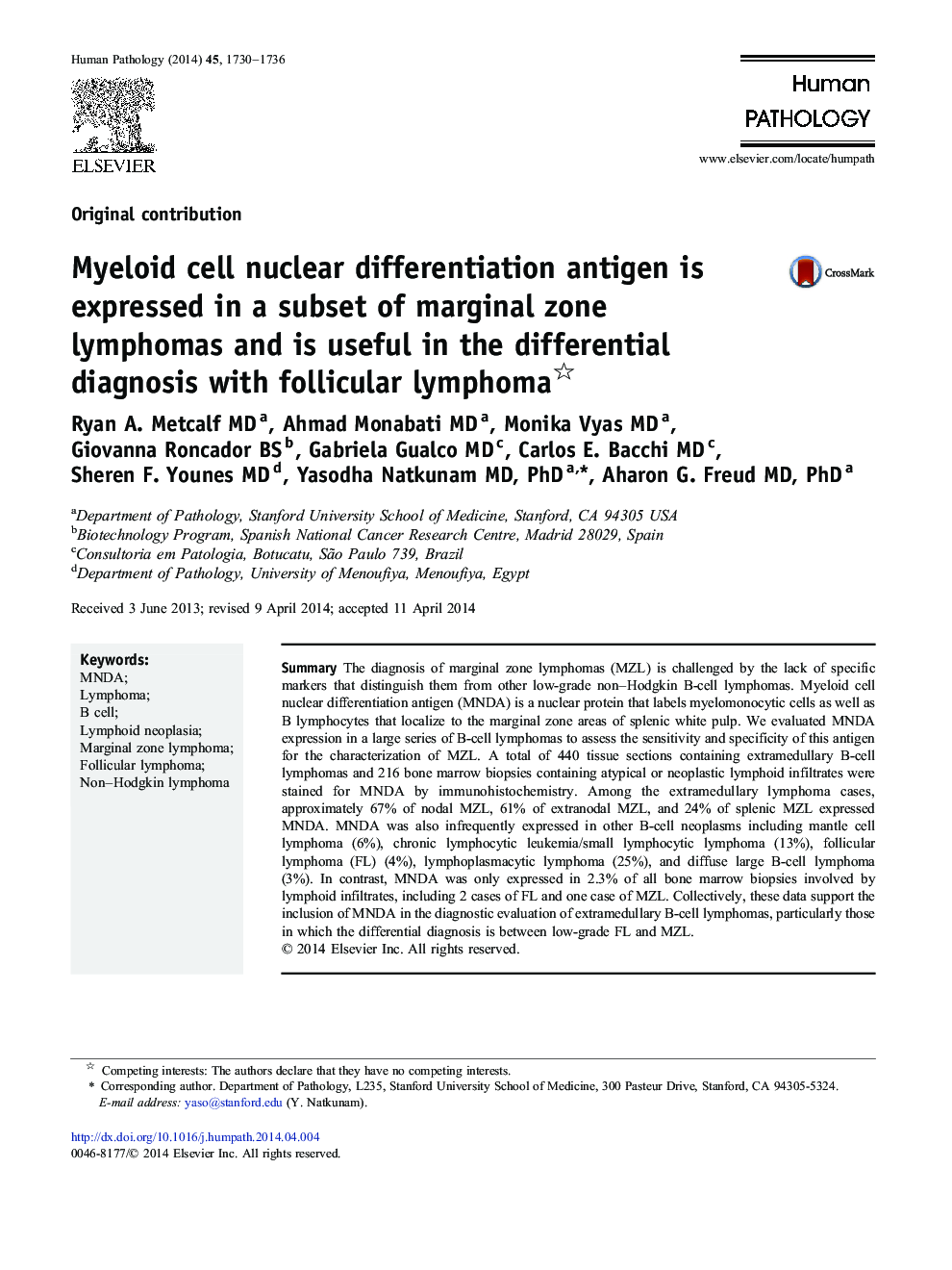| Article ID | Journal | Published Year | Pages | File Type |
|---|---|---|---|---|
| 6215736 | Human Pathology | 2014 | 7 Pages |
SummaryThe diagnosis of marginal zone lymphomas (MZL) is challenged by the lack of specific markers that distinguish them from other low-grade non-Hodgkin B-cell lymphomas. Myeloid cell nuclear differentiation antigen (MNDA) is a nuclear protein that labels myelomonocytic cells as well as B lymphocytes that localize to the marginal zone areas of splenic white pulp. We evaluated MNDA expression in a large series of B-cell lymphomas to assess the sensitivity and specificity of this antigen for the characterization of MZL. A total of 440 tissue sections containing extramedullary B-cell lymphomas and 216 bone marrow biopsies containing atypical or neoplastic lymphoid infiltrates were stained for MNDA by immunohistochemistry. Among the extramedullary lymphoma cases, approximately 67% of nodal MZL, 61% of extranodal MZL, and 24% of splenic MZL expressed MNDA. MNDA was also infrequently expressed in other B-cell neoplasms including mantle cell lymphoma (6%), chronic lymphocytic leukemia/small lymphocytic lymphoma (13%), follicular lymphoma (FL) (4%), lymphoplasmacytic lymphoma (25%), and diffuse large B-cell lymphoma (3%). In contrast, MNDA was only expressed in 2.3% of all bone marrow biopsies involved by lymphoid infiltrates, including 2 cases of FL and one case of MZL. Collectively, these data support the inclusion of MNDA in the diagnostic evaluation of extramedullary B-cell lymphomas, particularly those in which the differential diagnosis is between low-grade FL and MZL.
